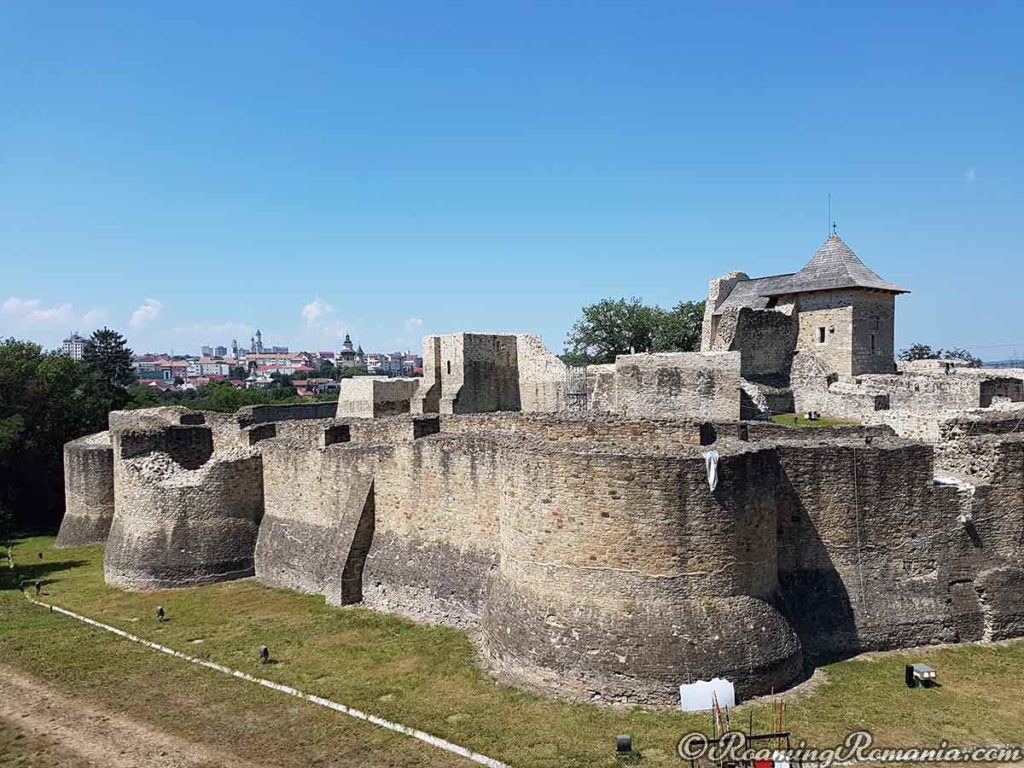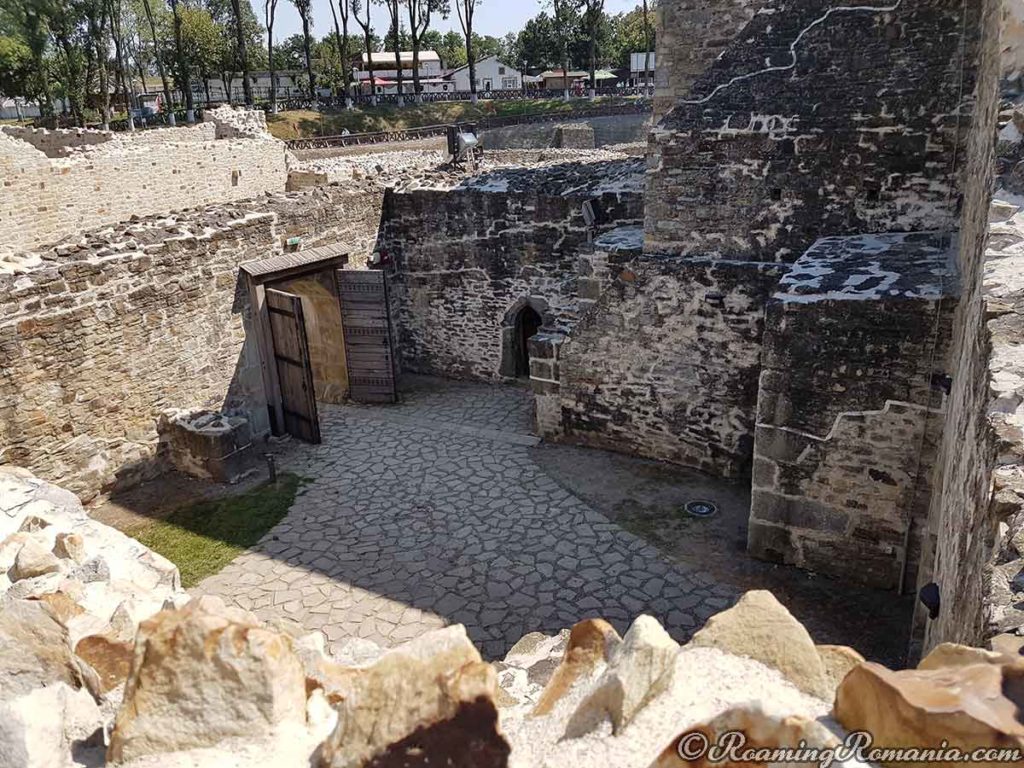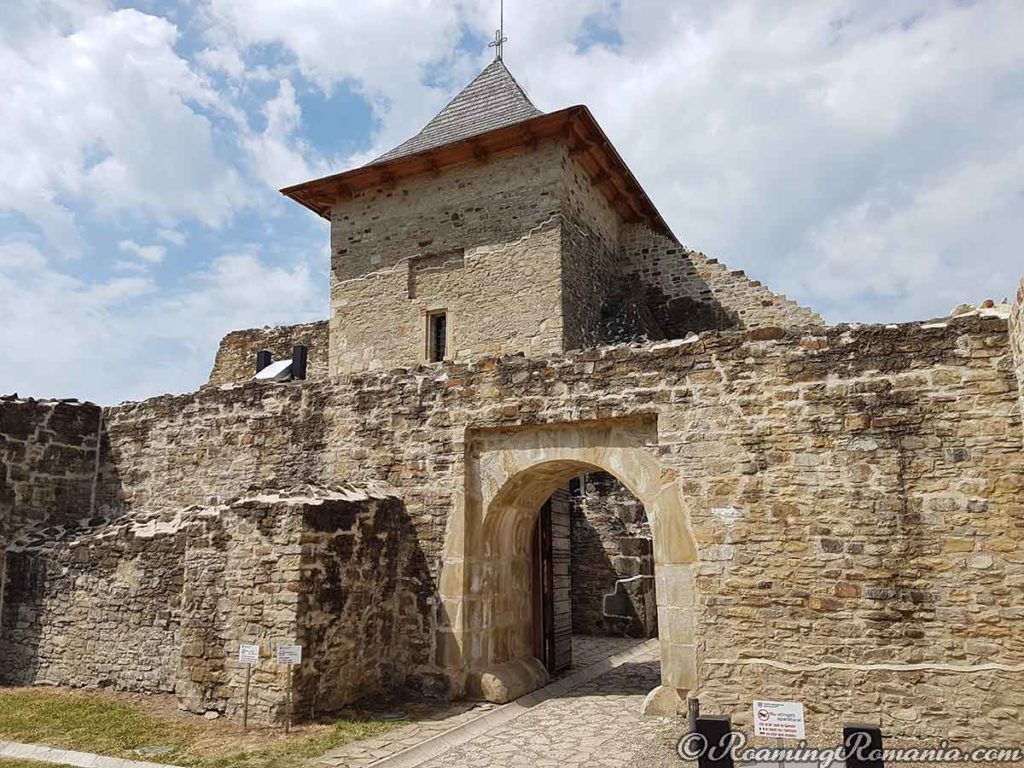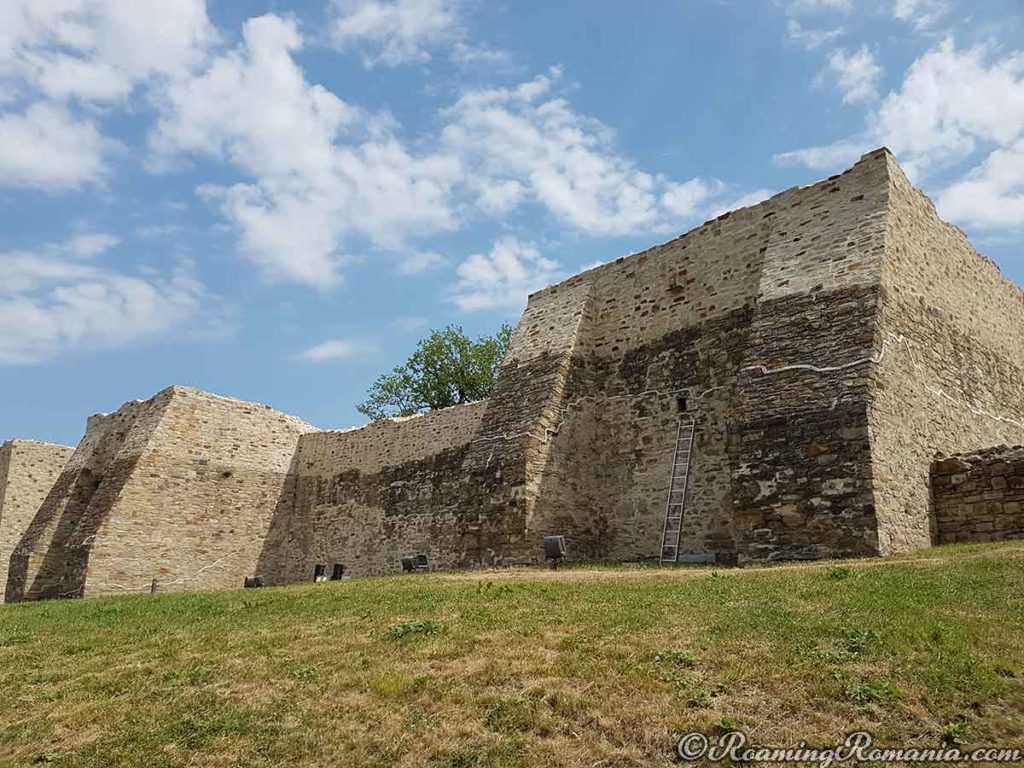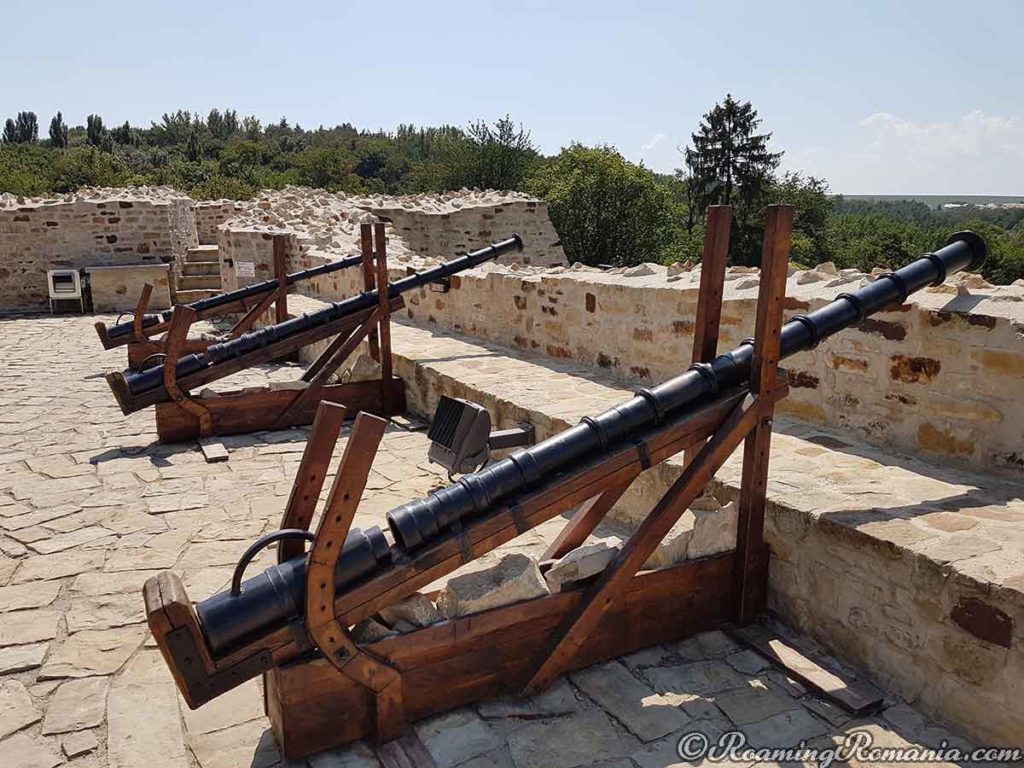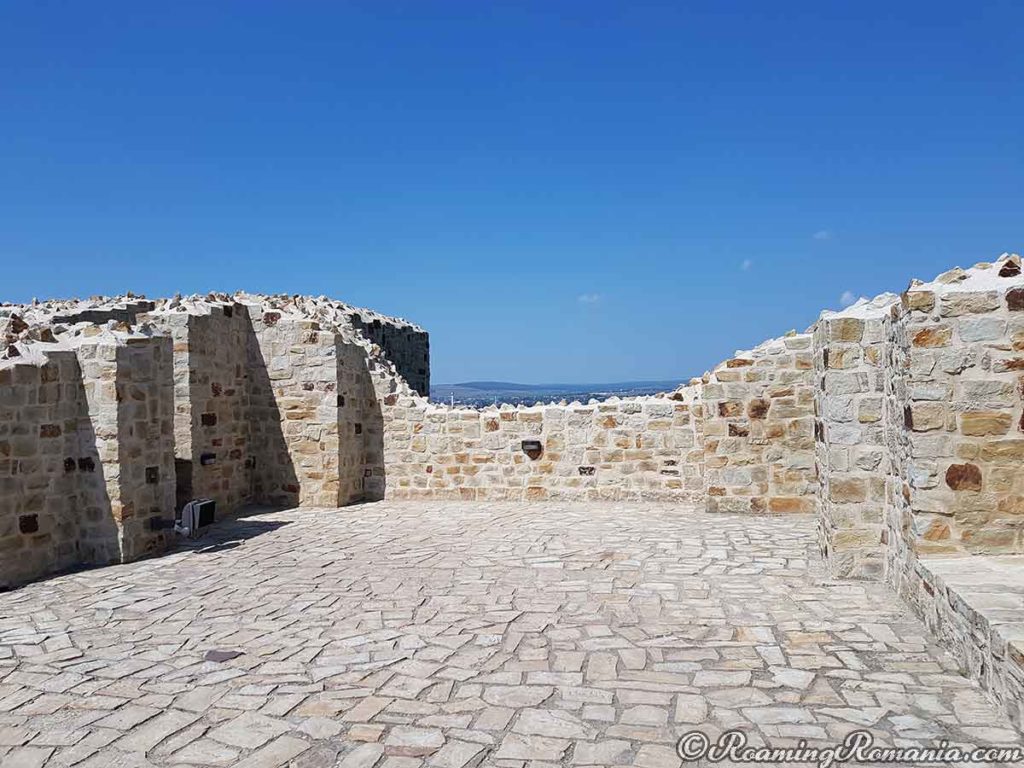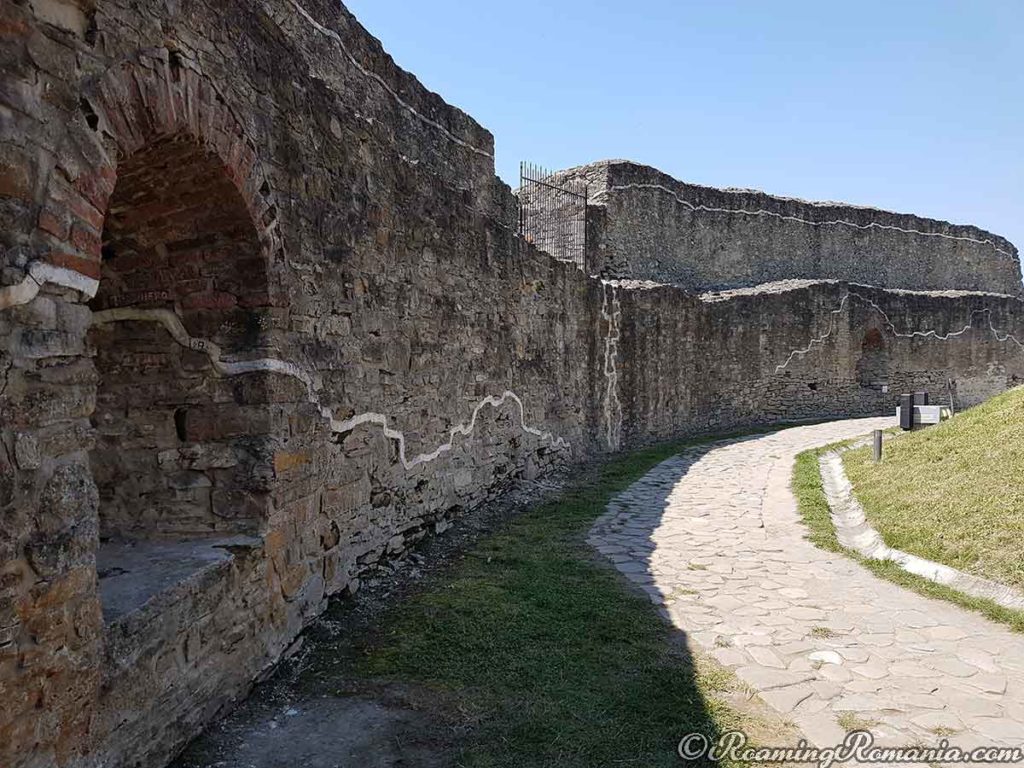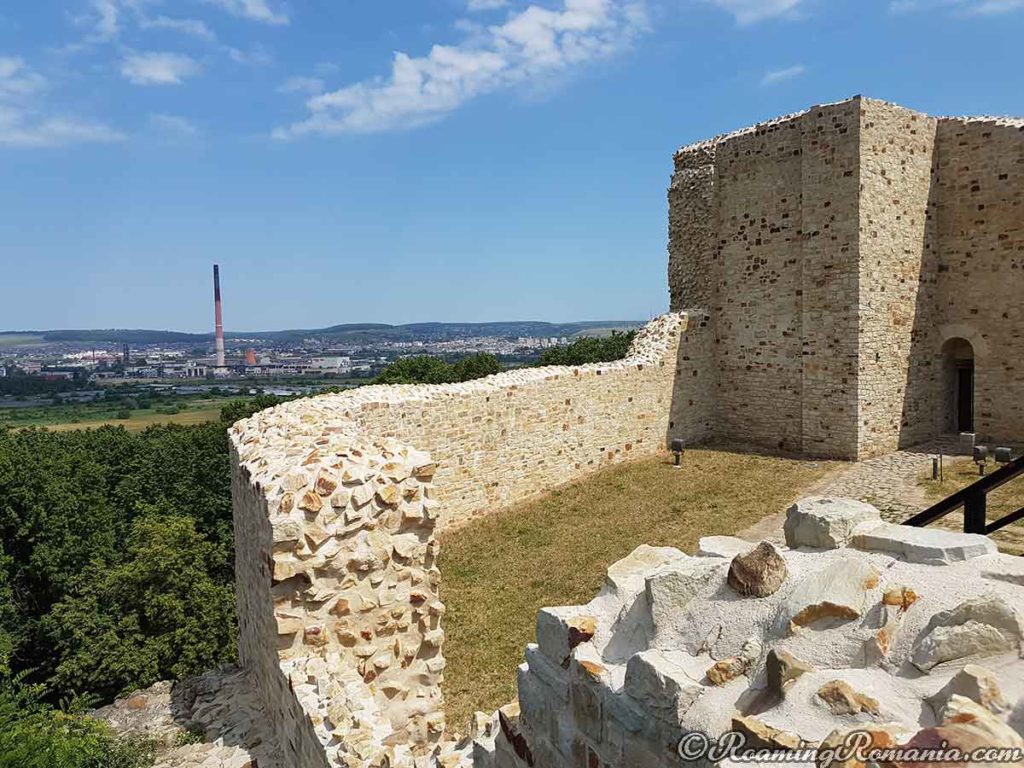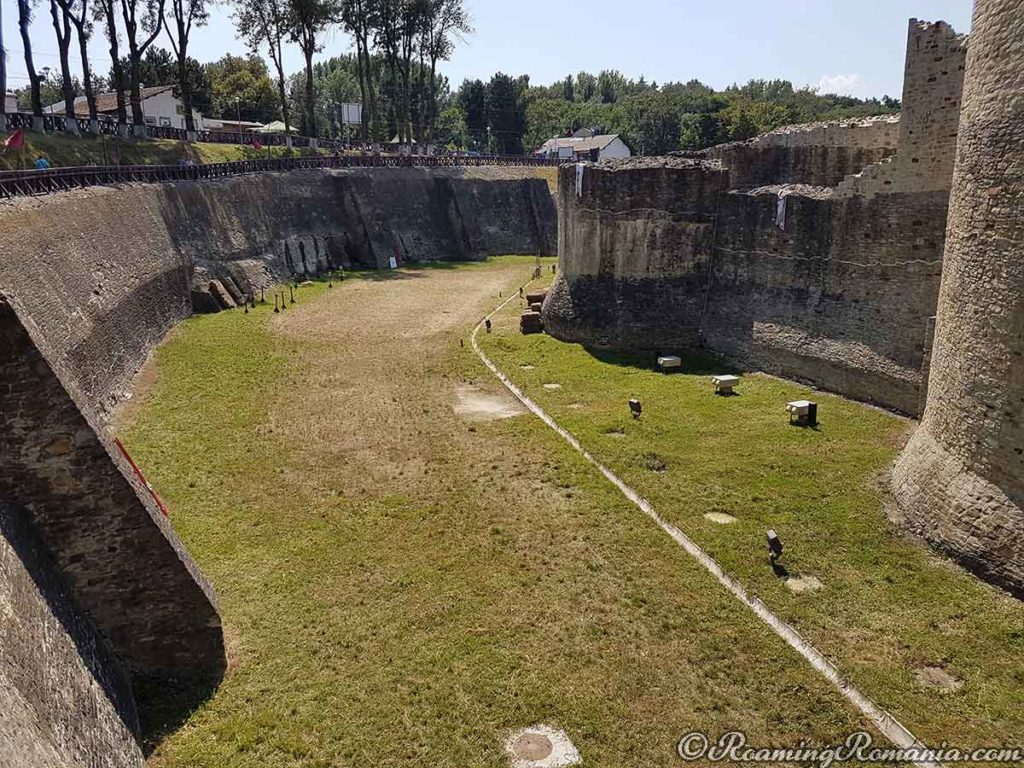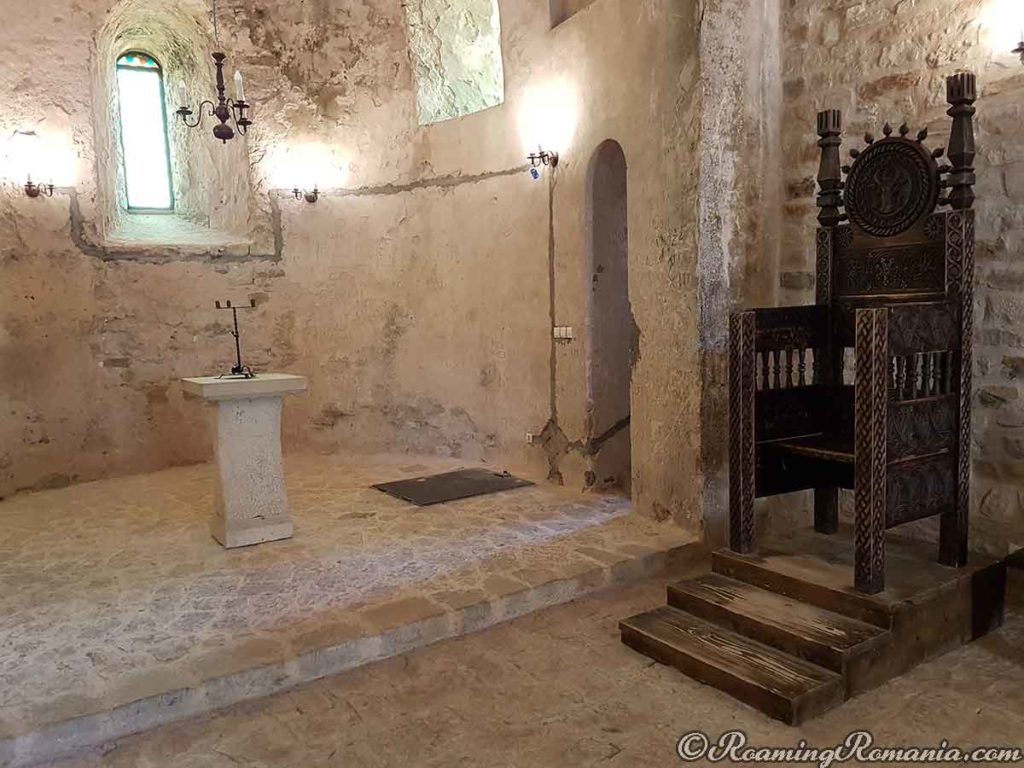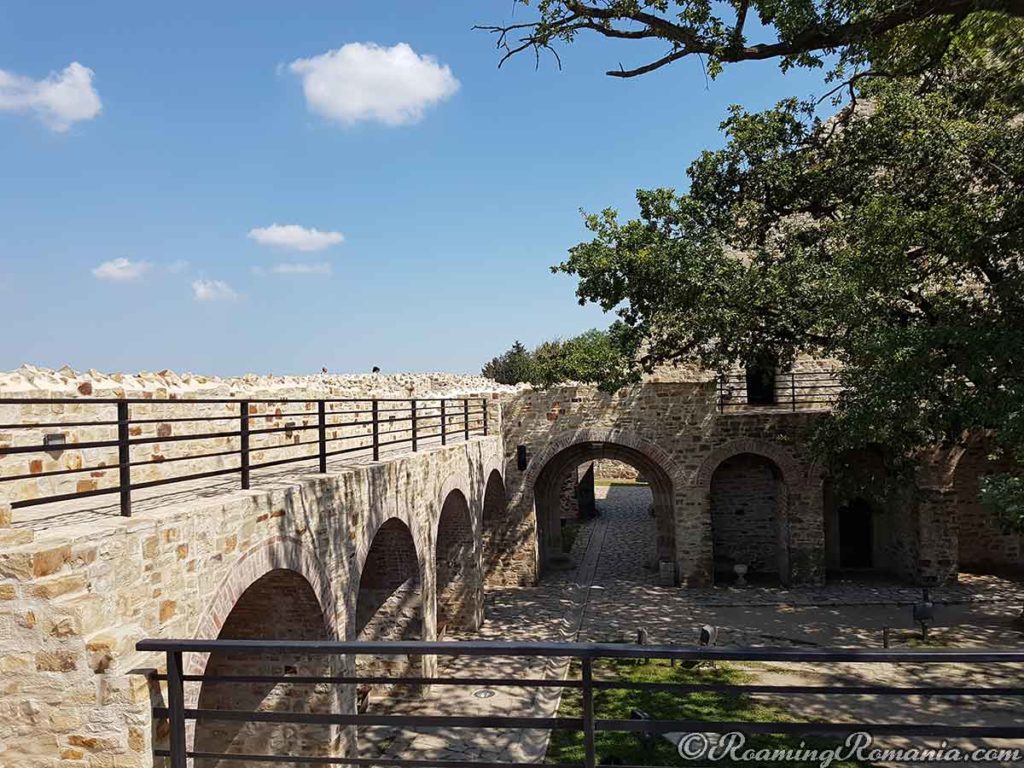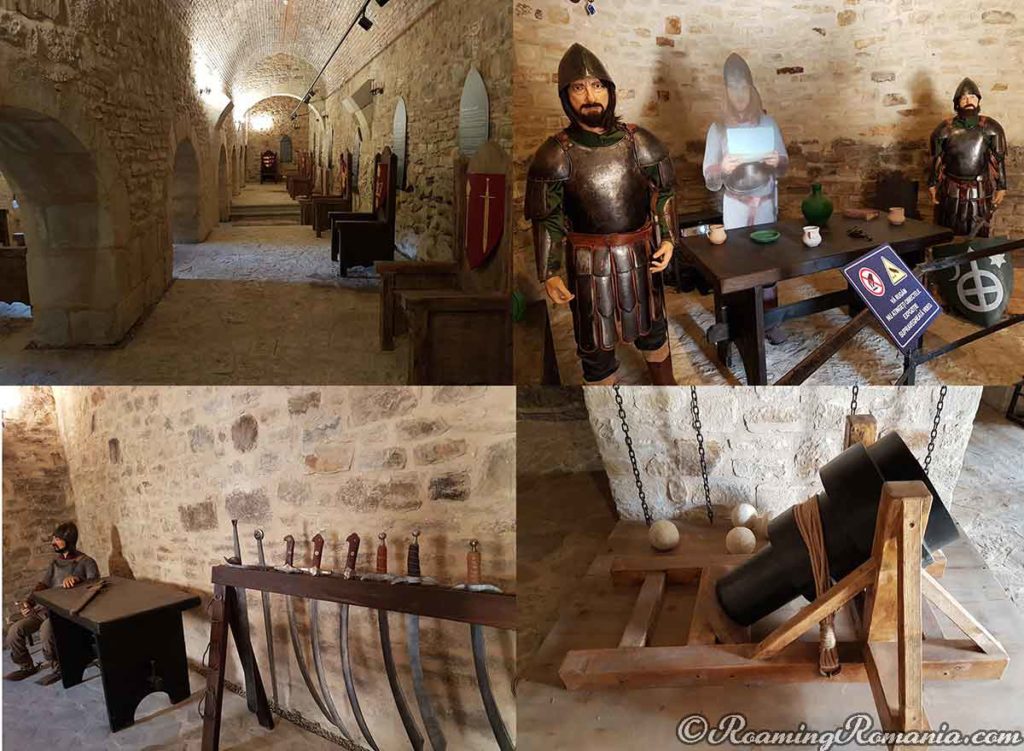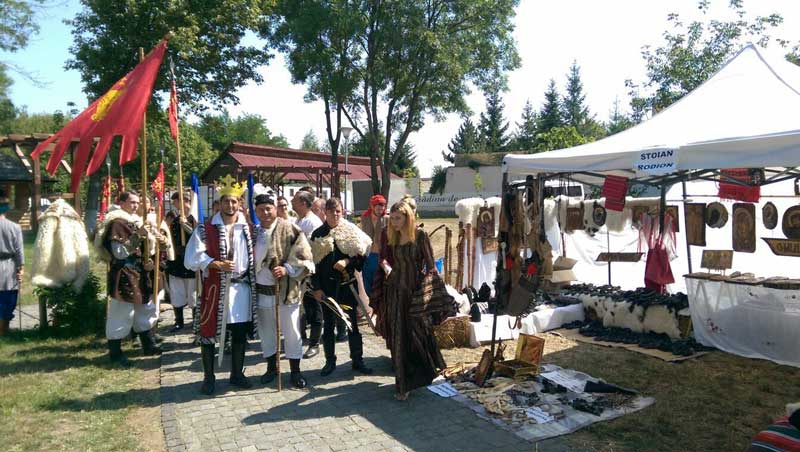Fortress of Suceava – Summary
The Fortress of Suceava (Cetatea de Scaun a Sucevei) is a 14th-century fortification located in the city of Suceava, Romania. The fortress was built in the late 1300s by Moldavian ruler Peter Mușat (Petru II). Prince Mușat built the fortress to serve as his fortified residence and to protect the new Moldavian capital of Suceava from the threat posed by the Ottoman empire. Throughout its long history, the fortress underwent numerous repairs and many modifications that strengthened it against vulnerabilities.
Over the nearly two hundred years since it was first erected, the fortress served as the residence for some of the most powerful and influential voivodes (rulers) of Moldavia. Some of the most famous rulers who lived within the fortress include Stephen the Great, Alexander the Good, Petru Rareș, and Vasile Lupu. The fortress has been the site of some of the bloodiest battles in Moldavia. Invaders ranging from Ottomans to traitors within the region have all tried to penetrate its defenses and capture the leaders within.
The fortress, also known as The Seat Fortress of Suceava, is one of the most visited tourist destinations in all of Bucovina. It holds a full-scale walkthrough museum that takes visitors through different interactive stages of the region’s history. The fortress, museum, and items found within are some of the most unique in the world. The Suceava Fortress also hosts yearly festivals and concerts that bring in tourists from all over the world. From history lovers to travelers and adventurers, the Fortress of Suceava has something for everyone!
Fortress of Suceava – Table of Contents
- Fortress of Suceava – History
- Fortress of Suceava – Architecture
- Fortress of Suceava – Present Day
- Fortress of Suceava – Video
- Fortress of Suceava – Visitor Info
Fortress of Suceava – History
The Fortress of Suceava has a deep, long, rich and impactful history. It played a role in some of the most important historical events that shaped the country of Romania into what it is today. The Fortress of Suceava was the site of dozens of bloody battles, it hosted some of the most powerful and notorious leaders in the world, and it was brought to near ruins and rebuilt dozens of different times.
Throughout the centuries of the turmoil, strife, occupation, independence, and unification that have changed the course of the city of Suceava, one thing has always remained a constant, The Fortress of Suceava. Although it was left at the brink of ruin many times, the Fortress managed to defy all odds and kept reappearing, stronger each time, as if immortal. Unfortunately, the same can’t be said about the numerous men who throughout history once called the fortress their home.
Fortress of Suceava – 14th to 15th Century History
The earliest recorded history of the Suceava Fortress dates back to a document from February 10, 1388. The historic document contained a written request made by prince Peter Mușat to his father in law, the king of Poland Władysław II Jagiełło, asking for a loan of 3,000 silver rubles. During the same year, Prince Mușat had relocated the capital of Moldovia from the nearby town of Siret, to present day Suceava.
The 1388 loan request was made for the purpose of obtaining funds in order to economically develop the new capital. The document concluded with the text “And the book was written in the Fortress of Suceava on Monday, in the first week of the fast under our seal, in the year of the birth of 1388.” Researchers have concluded that the 3,000-silver ruble request converted to the historical equivalent of 47,490 kg of gold.
For nearly a century of rule by previous voivodes, including Peter Mușat (1375 to 1391) and Alexander the Good (1400 to 1432), the Fortress of Suceava remained relatively peaceful without any major battles taking place. The era of calm, however, drastically changed to one of war for future leaders starting during the reign of Stephen the Great (1457 to 1504). In the summer of 1476, while under Stephen’s rule, a major besiegement was attempted on the fortress by the Ottoman army led by Sultan Mehmed II.
The soldiers inside the fortress heroically fought off the Turkish invaders until they retreated. Although the Moldavian soldiers won the battle, it did come at a cost. The Fortress of Suceava had sustained considerable amounts of damage. A benefit to the damage, however, was that it exposed defensive vulnerabilities of the fortification. After the battle, Stephen the Great incorporated many new defensive mechanisms into the fortress which strengthened it and helped it ward off two other unsuccessful besiegement attempts in 1485 and 1497.
Fortress of Suceava – 16th Century History
In 1538, an Ottoman army of about 200,000 soldiers led by Suleiman I (Suleiman the Magnificent) invaded Moldova in a massive attempt to conquer the land. At the same time, the region was also attacked by Crimean Tartars on the eastern front, and by Romanian and Hungarian armies on the western front. Moldavia’s ruler at the time was voivode Petru Rareș. Because of his authoritarian ruling style, prince Rareș had made many enemies among Moldavia’s aristocratic boyars. It was these same boyars who would end up being responsible for the first capture of the Fortress of Suceava.
Fed up and displeased with the laws and regulations of prince Rareș’s rule, the region’s boyars conveyed at the Royal Court of Bădeuţi and devised a plan to betray the ruler. The boyars, led by Gavril Trotuşan (founder of the Sunday Church of All the Saints) assisted Suleiman I in entering and invading Suceava. Once the sultan and his army arrived, the boyars handed him rule over Suceava’s Fortress. Because of the boyars traitorous acts, the Fortress of Suceava was successfully occupied by an enemy force for the first time in its history.
Prince Rareș evaded capture by the Turks and fled to the Ciceu Fortress in Transylvania. On September 14, 1538 Suleiman I and his army entered the city of Suceava with no resistance. Upon his arrival, the Sultan appointed the nephew of Stephen the Great, Stephen V Locust, as the new ruler of Moldavia. The following days the Sultan and his army, along with the Tatars pillaged and plundered the region. The barbarians stole great fortunes and left massive devastation and destruction in their wake. After many days of robbing the land, the Sultan returned to his homeland with untold amounts of stolen riches.
In 1563, while under occupation by the Moldavian ruler Iacob Heraclid, the Fortress of Suceava underwent a besiegement campaign by the hatman Ștefan Tomșa. Tomșa was chosen as prince by the boyars who sought to overthrow Heraclid. Held up in the Fortress of Suceava, Prince Heraclid was able to fight off the attackers for three long months. Tomșa and his army eventually broke through and murder the prince with a mace. Ștefan Tomșa then assumed the role of Moldavia’s prince. His ascendance to power, however, came at a great cost, the Fortress of Suceava was nearly destroyed during the battle to conquer it.
Fortress of Suceava – 17th Century History
At the end of the 16th century, during his second rule of Moldavia, and at the request of the Turks who brought him back into power, Prince Alexandru Lăpușneanu moved the capital of Moldavia from Suceava to Iaşi. The Turks wanted Moldavia’s capital moved from Suceava to Iaşi because the latter city was void of fortifications and thus wouldn’t be able to defend itself. At the commands of the Turks, Prince Lăpușneanu was also forced to destroy all the fortresses in the region by filling them with timber and lighting them on fire.
From the end of the 16th century into the 17th century, the Fortress of Suceava underwent reconstruction and served as a garrison and residence for various Moldavian princes. In May 1600, the Prince of Wallachia Mihai Viteazu undertook a military campaign aimed at conquering Moldavia. Viteazu and his Wallachian-Transylvanian forces crossed the Trotuş River and took occupation of Bacau. When the forces reached Suceava on 16 May, the defenders of the Fortress of Suceava surrendered the city to Viteazu without a fight.
After peacefully taking the fortress, Prince Viteazu left it with an occupying garrison and departed for Alba Iulia. Only a few months later, in September of 1600, a mixed Cossack and Polish army of about 24,000 troops descended on the city and retook the Fortress of Suceava from Viteazu’s garrison which failed defend it. The conquering army placed Ieremia Movilă, for his second tour, as the ruler of Moldavia. Throughout the first half of the 17th century, the fortress remained relatively unchanged, up until the rule of Vasile Lupu (1634 -1653) when it underwent the last of its major modifications.
The remaining of the 17th century saw the Fortress of Suceava undergo many devastating battles and a natural disaster that left it in ruins. In 1653, the son-in-law of Vasile Lupu, Timus Hmelnitski, was killed within the walls of the fortress following a great battle with Gheorghe Ștefan for the throne of Moldavia. The last battle to take place at the fortress was a 6-month fight between a Polish garrison installed by prince Ștefan Petriceicu, and Turkish forces. The Turks eventually won and commanded that the fortress be torn. In 1684, a massive earthquake did immeasurable damage to the fort, including completely collapsing its north side and leaving the structure ruins.
Fortress of Suceava – 20th to 21st Century History
At the end of the 17th century when anti-Turk Polish troops moved into and occupied Suceava, they used the Zamca Monastery as a fortification strong-hold as a replacement of the tattered Seat Fortress of Suceava. The Fortress of Suceava remained in ruins and was untouched for over two centuries. It was only at the beginning of the 20th century that the first excavation, restoration, and preservation works, led by Austrian Karl A. Romstorfer, took place at the fortress.
In the 1950’s, a team of archaeological researches led by Professor Ion Nestor of the Medieval Archeology School of Suceava surveyed and excavated the site of the fortress. The team found evidence of a deforestation burn that was used to clear the land in order to erect the fortress. More importantly, the archaeologists determined that no prior structure existed at the site before its construction during the reign of Peter Mușat.
The archeological team identified several different construction stages of the fortress’s development which spanned across many decades. At the fortress’s oldest section, the archeologists found several dozen silver coins that were issued by the mint of prince Mușat. It was the discovery of these coins, along with the document from 1388, that allowed researchers to accurately date the original construction of the fortress.
From 1961 to 1970 tremendous amounts of preservation and restoration works were carried out at the fortress. The chapel built by Stephen the Great was preserved and restored, the inner and outer walls were rebuilt by lengths of a few meters, and the dungeon room was made into a museum. A white stripe was left on the fortress walls to distinguish the restoration works from the original that remained intact. The next major restoration works that took place at the Fortress of Suceava began in 2004 as a commemoration of 500 years since the death of Stephen the Great.
During the 2004 restoration phase, the state allocated funds from its budget to help finance the project. Some of the works, among the many done during this period, included adding a concrete cover slab to the cellar, reinforcing the courtyard arches, and rebuilding the fort’s access bridge. From 2011 to 2015, the final massive restoration project took place at the fortress. The outcome from that project is the now fully finished and restored Fortress of Suceava that completely and accurately resembles its historic self.
Fortress of Suceava – Architecture
The Fortress of Suceava is found at a strategic location on a hilltop south-east of the city of Suceava. The location was chosen because of the hill’s naturally sloping steep sides. In order to build the fortress on an elevated platform, the original builders dug out different portions of the hill. Further reinforcement of the fortress was provided by the forested land that encompasses it to the south. Although the general foundation and architecture of the fortress remained relatively similar throughout the ages, much of the structure was altered and improved upon to suit the needs of the different rulers that occupied it during their reign.
In its final (and present) form, the Fortress of Suceava is an advanced multi-component fortification system. The outside of the fortress has massive walls encircled by a defensive ditch, it contains a drawbridge supported on two concrete pillars, and the protected entrance is through a massive entrance gate. The inner part of the fortress contains a large courtyard with many different rooms that server various different functions. Inside the fortress courtyard, there is a chapel, a royal flat, a market, a prison, storage cellars, a council hall, a royal bath, guard rooms, and defensive bastions.
Architecture of the Original Fortress of Suceava
The original version of the Fortress of Suceava was a castle built for prince Peter Mușat to serve as his living quarters. Shaped like a rectangle quadrilateral, with opposite sides consisting of equal lengths (40 m X 36 m), the original fortress hardly resembles the one of today. The walls were 2 meters thick and made of piled stones that were held together by a special mortar mixed with broken rocks and brick. Found at each of the rectangle’s 4 corners, as well as in the middle sections of each wall, were square bastions strategically placed for defensive purposes.
The eastern side of the fortress, about 4 meters out from the wall, had a 10-meter-deep ditch dug in order to protect against attack to the vulnerable side. Entrance into the castle was through a semi-circular gate positioned on the south side. The inside courtyard of the fortress was large and contained many rooms, chambers, and cellars common castles of the day. There was the ruler’s room, a lady’s room, king’s bath, food storehouse, a chapel, and a prison.
The first major modifications to the Fortress of Suceava were done by the Voivode Alexander the Good (Alexander I of Moldavia). Prince Alexander wanted to strengthen the fortress’s defense capability to protect against artillery and other forms of attack. He had a large wall built parallel to the fortress’s southern-wall which protected the castle’s entrance. Alexander also had the road leading to the fortress, as well as main portions inside, paved and reinforced.
Architecture of the Fortress of Suceava Under Stephen the Great
Perhaps no one in Bucovina’s history was more influential in fortifying the region than Voivode Stephen the Great. During his reign (1457-1504) the Principality of Moldavia faced impending dangers from many different enemies. The region was under constant threat of attack by Turks, Tatars, Hungarians, and Poles. Prince Stephen’s the Great was a defensive genius who is credited for building the first fortified monasteries in Moldova and strengthening the existing fortresses. The prince strengthened the Fortress of Suceava by building a second circular outer citadel that fit like a ring around the inner rectangular citadel.
Stephen the Great’s biggest modification of the fortress of Suceava was the two-stage addition of its enclosure wall. The first wall, built prior to 1476, was 1.5 meters thick, and 15 meters tall. It encircled the west, south, and eastern outer portions of the fortress. The wall had three square-shaped defense towers which contained crenels for firing. An unsuccessful siege attempt by the Ottomans in 1476 caused Stephen the Great to further fortify the fortress. He expanded the width of the wall to 3 m thick and replaced its defense towers with semicircular bastions that could hold cannons.
To provide further defensive measures to the fortress, Stephen the Great had massive defense ditches dug on all sides, with the exception of the north which was already facing a massive natural slope. He also had a counterscarp dug around key portions of the fortress, and moved the entrance to the heavily fortified eastern side. A massive drawbridge with a trap hatch was added over the entrance ditch. If invaders crossed past the middle of the bridge, the front could be retracted to trap the attackers in the deep ditch.
Architecture of the Fortress of Suceava from the 17th to 21st Century
After Stephen the Great’s rule and throughout the 16th century the majority of the work that took place at the fortress were restorations after battles, and other internal modifications to suit the tastes of the various Voivodes that occupied it. The last major architectural changes that were done to the Suceava Fortress came during the reign of Vasile Lupu (1634-1653).
Prince Lupu rebuilt the exterior walls, added arches and pillars to the inner courtyard, and refurbished the fortress’s cellars. He also completely renovated the fortress’s bath and prison. The prince also brought a Lithuanian influence to the fort by importing and using Iznik pottery in its kitchen.
Fortress of Suceava – Present Day
The Fortress of Suceava in the present day is a fully reconstructed masterpiece revival of the version that was once lost in history. The fortress hosts permanent museum exhibitions throughout the different courtyard rooms. There are armories which showcase medieval weapons ranging from crossbows, and swords, to killing devices such as lances and battle axes. The fortress contains a restoration of the original chapel created by Stephen the Great. There is a voivodes room that houses the chair of each of Moldavia’s historic rulers. One of the fortress’s most popular rooms is a dungeon that has real-life cannon balls on display.
Walking through the different sections and rooms of the Fortress of Suceava is like traveling through different stages in history. The fortress is set up in a way to allow visitors to see the magnificence of its construction in full as they walk the path towards its drawbridge and entrance gate. Once inside, tourists can take staircases that lead to bastions, climb high to lookout spots adorned with cannons, walk by catapults and execution zones, explore interactive rooms with holograms and videos, and even have a seat a picnic table for a lunch.
The Fortress of Suceava also attracts yearly visitors to different events hosted within the inner and outer areas of the structure. Some of the most popular events to take place at the fortress include art displays, medieval reenactments, and film festivals. The Fortress is also the host of a controversial yearly rock festival known as the Bucovina Rock Castle, a 3-day long event that draws in concertgoers from all over Europe. The concert is criticized by religious leaders for its satanic themes, and because of its proximity to the historically significant Fortress of Suceava.
Fortress of Suceava – Video
Coming Next
Fortress of Suceava – Visitor Information
Location
The Fortress of Suceava is located towards the outskirts of Suceava at the address Aleea Cetății, Suceava, Romania there are multiple indicator signs throughout the city that point towards its location. The Fortress has a large gravel parking lot right in front of the entrance, there are bathrooms and a restaurant located right before the entrance of the fortress.
Visitation
Visitation hours vary throughout the different months of the year but are generally around 9:00 am to 8:00 pm. The full yearly schedule is found on the museum’s official homepage. The price for visitation is 12 lei for adults and 3 lei for children and students.
